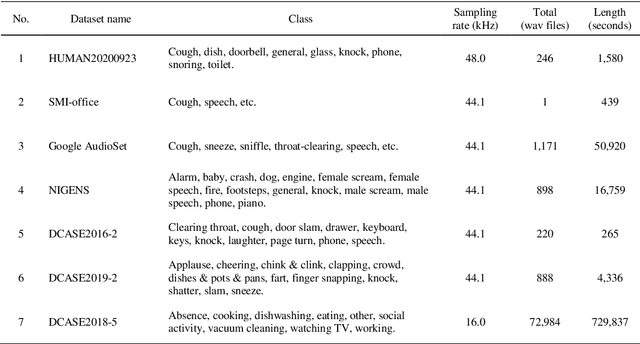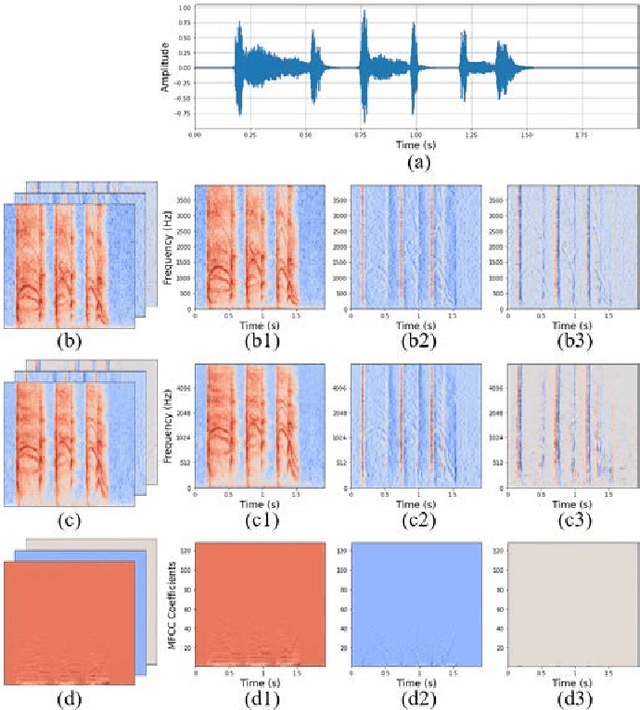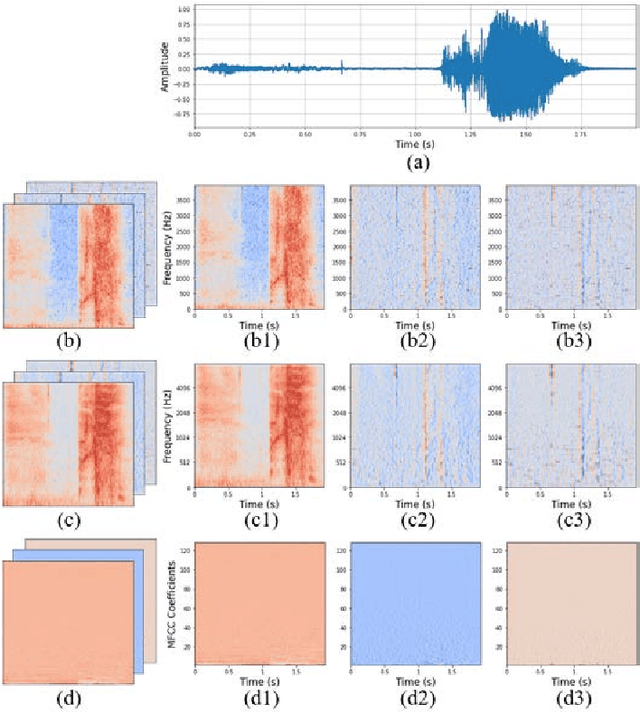Youngkey Kim
Deep learning based cough detection camera using enhanced features
Jul 28, 2021



Abstract:Coughing is a typical symptom of COVID-19. To detect and localize coughing sounds remotely, a convolutional neural network (CNN) based deep learning model was developed in this work and integrated with a sound camera for the visualization of the cough sounds. The cough detection model is a binary classifier of which the input is a two second acoustic feature and the output is one of two inferences (Cough or Others). Data augmentation was performed on the collected audio files to alleviate class imbalance and reflect various background noises in practical environments. For effective featuring of the cough sound, conventional features such as spectrograms, mel-scaled spectrograms, and mel-frequency cepstral coefficients (MFCC) were reinforced by utilizing their velocity (V) and acceleration (A) maps in this work. VGGNet, GoogLeNet, and ResNet were simplified to binary classifiers, and were named V-net, G-net, and R-net, respectively. To find the best combination of features and networks, training was performed for a total of 39 cases and the performance was confirmed using the test F1 score. Finally, a test F1 score of 91.9% (test accuracy of 97.2%) was achieved from G-net with the MFCC-V-A feature (named Spectroflow), an acoustic feature effective for use in cough detection. The trained cough detection model was integrated with a sound camera (i.e., one that visualizes sound sources using a beamforming microphone array). In a pilot test, the cough detection camera detected coughing sounds with an F1 score of 90.0% (accuracy of 96.0%), and the cough location in the camera image was tracked in real time.
 Add to Chrome
Add to Chrome Add to Firefox
Add to Firefox Add to Edge
Add to Edge